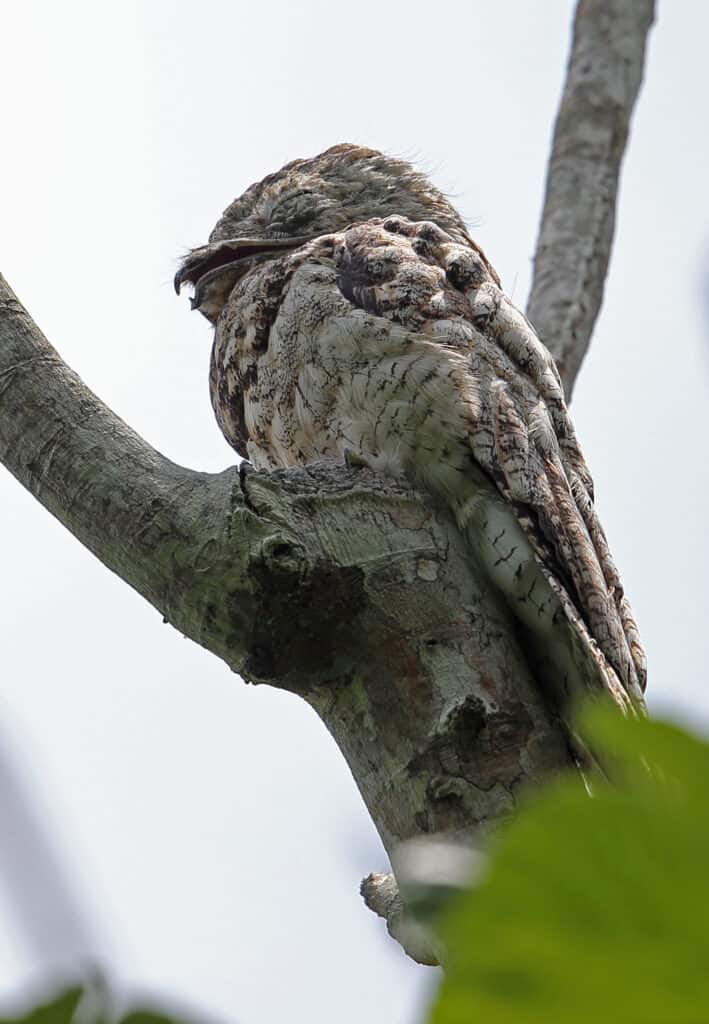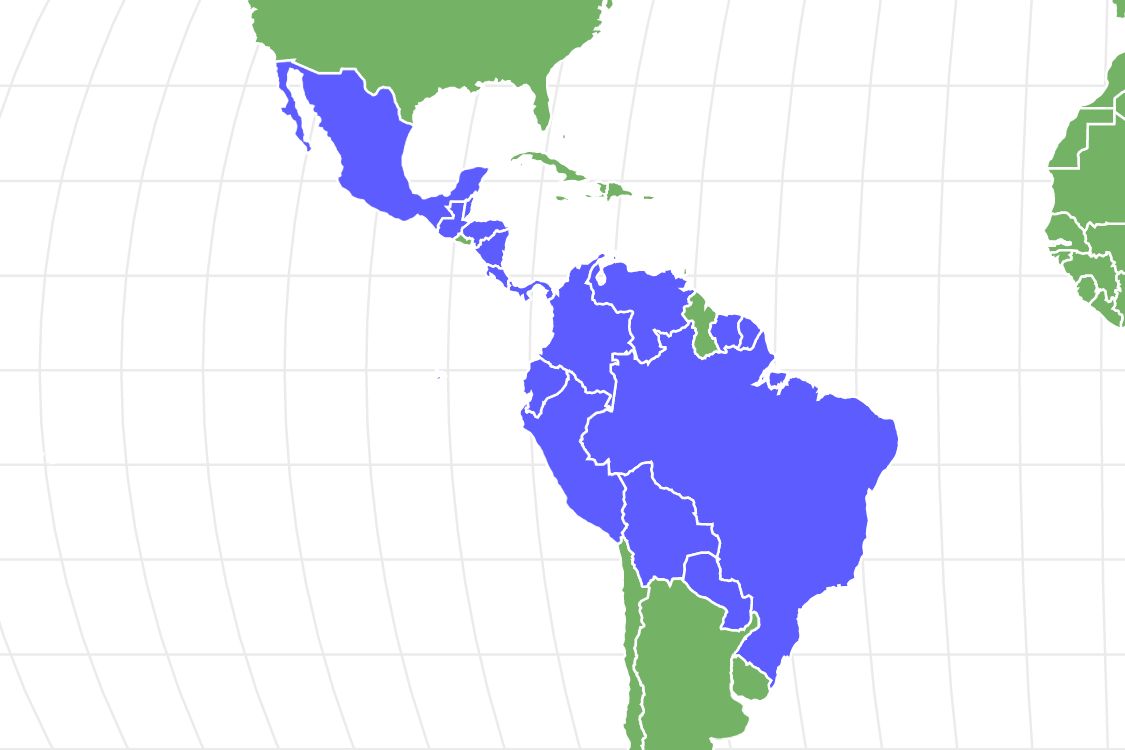Great Potoo Bird
Nyctibius grandis
At night, they make a terrifying low call that sounds like a distressed moan or growl.
Advertisement
Great Potoo Bird Scientific Classification
- Kingdom
- Animalia
- Phylum
- Chordata
- Class
- Aves
- Order
- Nyctibiiformes
- Family
- Nyctibiidae
- Genus
- Nyctibius
- Scientific Name
- Nyctibius grandis
Read our Complete Guide to Classification of Animals.
Great Potoo Bird Conservation Status
Great Potoo Bird Facts
- Prey
- Large flying insects, bats, birds
- Main Prey
- Large flying insects
- Name Of Young
- Chicks
- Group Behavior
- Mainly solitary
- Fun Fact
- At night, they make a terrifying low call that sounds like a distressed moan or growl.
- Estimated Population Size
- 500,000 to 5 million
- Biggest Threat
- Habitat loss from forest clearing
- Most Distinctive Feature
- Large, round eyes
- Distinctive Feature
- Large mouths
- Wingspan
- 28 inches
- Incubation Period
- 1 month
- Age Of Fledgling
- Two months
- Diet for this Fish
- Omnivore
- Lifestyle
- Nocturnal
- Special Features
- Notches on their upper eyelids allow them to sense movement when their eyes are shut.
- Number Of Species
- 1
- Location
- Central and South America
- Average Clutch Size
- 1
- Nesting Location
- Natural depressions of tall trees around 30 feet above the ground
Great Potoo Bird Physical Characteristics
- Color
- Grey
- Black
- White
- Skin Type
- Feathers
- Weight
- 13 - 23 ounces
- Length
- 19 - 24 inches
- Aggression
- Low
View all of the Great Potoo Bird images!
It has a harsh, terrifying call.
The great potoo is the largest of its species and has a wide range throughout Central and South America. This bird is nocturnal and produces a low call that sounds similar to a distressed moan or growl at night, terrifying anyone nearby. Despite its terrifying vocalizations, great potoos are not aggressive and live solitary lives. Discover everything there is to know about these unusual birds, including their habitat, diet, and reproduction.
5 Amazing Great Potoo Bird Facts
- Male and female great potoos look so similar that ornithologists have difficulty telling them apart.
- Great potoos are extremely shy and skittish, spending most of their lives in tall trees.
- These birds use camouflage to escape predators by thoroughly blending with their environment.
- Great potoos catch their prey mid-air, using their large mouths as traps.
- They can see with their eyes closed! Notches on their upper eyelids allow them to sense movement when their eyes are shut.
Where to Find the Great Potoo Bird
Their range begins from Southern Mexico to Northeastern Guatemala and most of Central America. They live in a large portion of Northern South America, and you can find them as far south as Brazil and Bolivia. They inhabit humid to semi-humid forests, primarily dense lowlands, clearings, and forest edges. But you can find them in most habitats as long as there are trees that can provide camouflage. Other habitats include foothills, open woodlands, and meadows. During the day, you can find them perching or resting in big trees over 40 feet above the ground. They move to lower branches five feet above the ground at night and hunt.
Countries:
- Belize
- Bolivia
- Brazil
- Colombia
- Costa Rica
- Ecuador
- French Guiana
- Guatemala
- Guyana
- Honduras
- Mexico
- Nicaragua
- Panama
- Paraguay
- Peru
- Suriname
- Venezuela
Great Potoo Bird Nest
Great potoo birds do not build nests. Instead, they use a deep natural depression or crevice in a large branch, typically around 30 feet above the ground.
Scientific Name
In 1816, French ornithologist Louis Jean Pierre Vieillot placed the great potoo and six other potoos in the genus Nyctibius. Its genus name is ancient Greek and means “night-living.” The great potoo is monotypic, meaning it has no recognized subspecies.
Size, Appearance, and Behavior
The great potoo bird has a large head, giant, round eyes, elliptical-shaped wings, large, gaping mouths, and an elongated tail. They weigh between 13 and 23 ounces and grow from 19 to 24 inches with a 28-inch wingspan. Their coloring varies between white, gray, black, and burgundy with white lateral tail bars. Their feathers blend with their habitats, often making them difficult to spot.
They are nocturnal predators who perch on high trees until they spot their prey, then pounce mid-air as it begins to fly. But it returns to its perch before it begins eating. During the day, it rests on tree stumps, completely camouflaged by its surroundings. These creatures are solitary and wary of humans and other animals. The best way to find them at night is to look for the light reflected from their eyes.
Great potoos form monogamous pairs and may mate for life. However, little is known about their courting and breeding behaviors, mainly due to their closeness in appearance (lack of dimorphism). These birds are not social and only come together for breeding. But they are not aggressive towards others of their kind and may even alert one another to dangers. Researchers have also witnessed them working in groups to deter predators. Due to their lack of territorial behavior, their solitary nature is more of a preference than a necessity.

Great potoos are 19 to 24 inches long and have a 28-inch wingspan.
©iStock.com/Nyctibius grandis
Diet
The great potoo bird primarily eats flying insects.
What Does the Great Potoo Bird Eat?
They are carnivores and eat large flying insects, such as beetles, crickets, grasshoppers, and katydids. They also occasionally indulge in bats and birds. Using the same hunting perch, the great potoo utilizes its coloring and cloak of darkness to remain invisible to prey. It easily darts out from its perch, grabs it with its gaping mouth, and returns to its preferred eating spot.
Predators, Threats, and Conservation Status
The IUCN lists the great potoo bird as “least concern” due to its large population and wide-ranging habitat. However, their population is steadily declining, mainly from habitat loss (forest clearing). These birds are also hunted by locals who use their body parts for ritualistic ceremonies.
What Eats the Great Potoo?
The great potoo has few predators, but their nests occasionally get ransacked by falcons and monkeys. The adults often stand guard next to the nest during the day and rely on camouflage for protection.
Reproduction, Young, and Molting
Their breeding season can be as early as February and as late as August and typically aligns with the region’s wet season. But some areas provide year-round breeding conditions. Females lay one egg per breeding season. We don’t know much about their brooding behavior, but researchers estimate incubation to be around one month. Mated pairs work together to incubate, feed, and guard their young. Chicks are around seven ounces by a few days old, and after five weeks, they resemble their parents except with lighter builds and paler plumage. Their young fledge the nest around two months old and whisdon’t return.
Population
The IUCN estimates their population to be around 500,000 to almost 5 million mature individuals. Their numbers are slightly declining at about 7% over three generations, most likely from ongoing habitat loss.
Up Next:
View all 170 animals that start with GGreat Potoo Bird FAQs (Frequently Asked Questions)
Does the great potoo bird migrate?
This bird is nonmigratory and lives year-round in Central and South America.
How many eggs does the great potoo lay?
Great potoos produce one egg per year during the rainy season.
How fast does the great potoo fly?
Their exact speed is unknown, but they are recognized as moderately fast flyers.
What is the great potoo’s wingspan?
The great potoo’s wingspan is 27 inches, slightly over two feet.
When do great potoo birds leave the nest?
Their young fledge around 55 to 60 days after hatching but will move around the tree limbs after one month.
How do you find the great potoo bird?
You can find the great potoo bird in the dense lowland forests of Central and South America.
What time of year is best for finding the great potoo?
You can find these birds in their preferred habitats year-round. However, the great potoo is nocturnal, so they may be hard to spot.
How big is the great potoo?
The great potoo is around 23 inches tall on average, the largest member of its order.
How much does the great potoo weigh?
The great potoo weighs between 12 and 23 ounces.
What color is the great potoo?
The feather colors vary from white, gray, black, and burgundy, with white lateral bars across its tail.
When does the great potoo bird nest?
Breeding season is typically between February and August, but depending on the region, they can breed year-round.
When does the great potoo migrate?
The great potoo is nonmigratory.
What does the great potoo eat?
Their diet consists primarily of large flying insects like beetles and katydids, but they may also eat bats and other birds.
What eats the great potoo?
Their predators included weasels, falcons, howlers, and other monkeys.
What threatens the great potoo bird?
Although their population is stable, their numbers are decreasing due to habitat loss.
What is a great potoo baby called?
Great potoo babies are called “chicks.”
How long does the great potoo live?
There is not enough research to give a sufficient answer, but many believe they live between 12 and 14 years.
How does the great potoo mate?
Due to their secretive nature, their mating habits are not readily known. However, we know they form monogamous breeding pairs but don’t typically live together after the breeding season.
Thank you for reading! Have some feedback for us? Contact the AZ Animals editorial team.
Sources
- IUCN Red List, Available here: https://www.iucnredlist.org/species/22689636/163599353
- JSTOR, Available here: https://www.jstor.org/stable/1368858
- SORA UNM, Available here: https://sora.unm.edu/sites/default/files/journals/condor/v081n03/p0322-p0322.pdf
- Degruyter, Available here: https://www.degruyter.com/document/doi/10.7560/719651-041/html

















